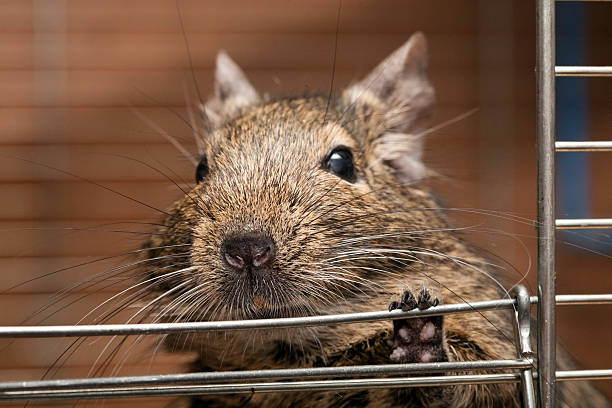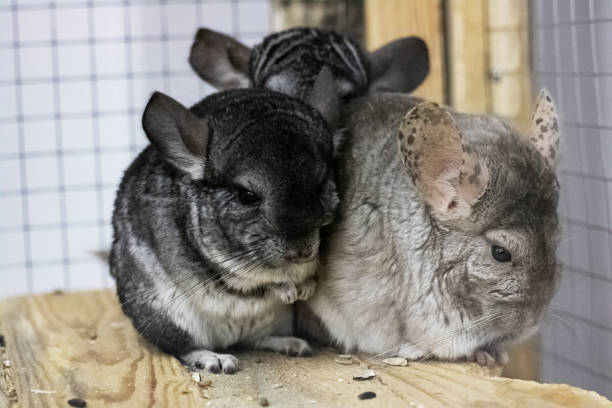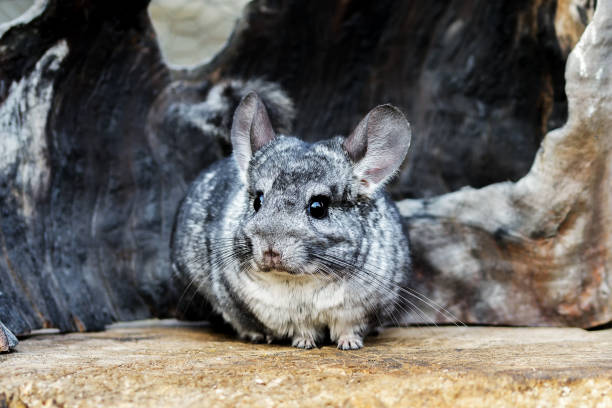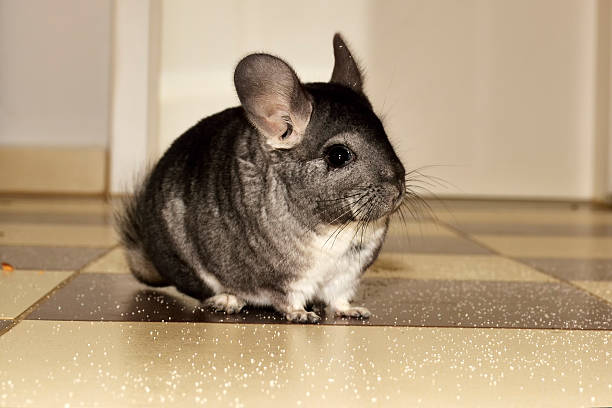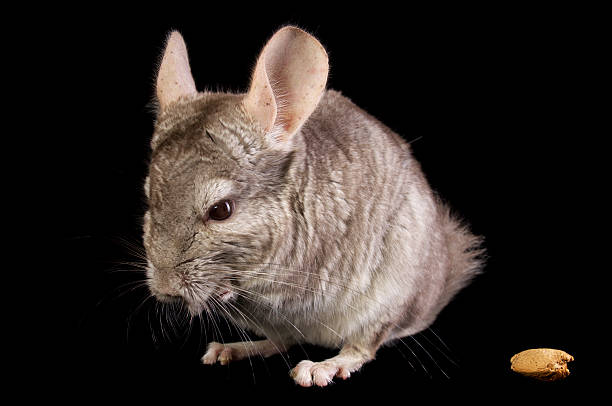Dust Baths and Beyond: 6 Grooming Essentials for Chinchillas
This post contains affiliate links. This means I will make a commission at no extra cost to you should you click through and make a purchase. Read the full disclosure here.
Chinchillas, with their soft, luxurious fur and playful personalities, are undeniably charming pets. As chinchilla owners, it’s our responsibility to ensure their health and well-being, and one crucial aspect of chinchilla care often overlooked is grooming.
Grooming is not just about maintaining your chinchilla’s appearance; it’s a vital element of their overall health and happiness. In this comprehensive guide, we’ll explore the grooming essentials for chinchillas, with a particular focus on an iconic chinchilla behavior: dust baths.

Understanding Chinchilla Grooming Needs
Chinchillas are meticulous groomers by nature, and they have unique grooming needs that are essential for their health and well-being. In this section, we’ll delve into the specifics of chinchilla grooming and the critical role of dust baths:
The Role of Dust Baths
1. Explaining Chinchillas’ Unique Grooming Habits:
Chinchillas have a distinctive approach to grooming compared to many other animals. They do not use water to clean themselves, as their dense fur is exceptionally efficient at absorbing moisture, making them susceptible to fungal and bacterial infections if they get wet. Instead, chinchillas rely on dust baths to maintain their fur and skin.
2. How Dust Baths Mimic Natural Behaviors:
In the wild, chinchillas roll in volcanic ash or fine dust to rid their fur of excess oils, dirt, and parasites. This behavior has been adapted to their domesticated lifestyle. Dust baths not only serve a functional purpose but also provide mental stimulation and a sense of comfort for chinchillas.
3. Why Dust Baths Are Essential:
Dust baths are not merely a luxury for chinchillas; they are a necessity. When chinchillas roll in dust, it adheres to the oils on their fur and absorbs dirt, effectively cleaning their coat. Without regular dust baths, chinchillas are at risk of developing skin issues and matting in their fur, which can be uncomfortable and lead to more severe health problems if left untreated.
Frequency of Grooming
1. How Often Chinchillas Need to Take Dust Baths:
Chinchillas have individual grooming preferences, but as a general guideline, they should have access to a dust bath at least two to three times a week. However, some chinchillas may require more frequent dust baths, while others may be content with less.
2. The Impact of Environmental Factors:
Environmental conditions can influence how often chinchillas groom themselves. High humidity or excessive heat can lead to increased oil production in their fur, prompting them to groom more frequently. Monitoring the climate in your chinchilla’s habitat can help you gauge their grooming needs.
3. Observing Chinchillas for Signs of Grooming Needs:
Pay close attention to your chinchilla’s behavior. If you notice them scratching, rolling, or attempting to clean themselves vigorously, it’s a clear sign that they are ready for a dust bath. Providing timely access to a dust bath ensures they can maintain their hygiene effectively.
Understanding the role of dust baths and the frequency of grooming is fundamental to meeting your chinchilla’s unique grooming needs.
Providing Effective Dust Baths

Now that we’ve explored why dust baths are essential for chinchillas, it’s crucial to understand how to provide the best dust bath experience for your furry companions. This section covers the key aspects of offering effective dust baths:
Choosing the Right Dust
1. Selecting Appropriate Chinchilla Dust:
Not all dust is suitable for chinchilla baths. Chinchilla-specific dust is finely ground and designed to mimic the volcanic ash or fine dust found in their natural habitats. Avoid using sand, as it can be too abrasive for their sensitive skin.
2. Avoiding Products That Could Harm Chinchillas:
Ensure that the dust you choose is free from additives, chemicals, or fragrances. These can irritate your chinchilla’s skin and eyes. Always opt for pure, natural chinchilla dust from a reputable source.
3. Comparing Different Types of Dust:
While most chinchilla dust is similar, you may come across variations in texture or mineral content. Experimenting with different brands can help you find the dust that your chinchilla prefers, but always prioritize quality and purity.
Creating a Dust Bath Area
1. Setting Up a Designated Dust Bath Spot:
Create a specific area in your chinchilla’s enclosure for dust baths. This should be separate from their food and water dishes and other cage accessories.
2. Choosing the Right Container:
Select a container for the dust bath that allows your chinchilla to roll and move freely while bathing. A shallow, flat-bottomed container with high sides works well. Avoid containers with sharp edges or corners to prevent injury.
3. Keeping the Dust Bath Area Clean and Hygienic:
Regularly clean and replace the dust bath container to ensure that it remains free of feces, urine, or debris. Dirty dust can irritate your chinchilla’s skin and defeat the purpose of the bath.
Introducing Chinchillas to Dust Baths

1. Guiding Chinchillas to Their Dust Bath for the First Time:
When introducing a young chinchilla to dust baths, gently guide them into the container. They may be hesitant at first, but they will likely grow to enjoy the experience.
2. Observing Their Natural Behaviors During Dust Baths:
Chinchillas exhibit joyful and playful behaviors during dust baths, including rolling, flipping, and shaking. These activities are entirely normal and help them effectively clean their fur.
3. Ensuring Chinchillas Enjoy a Stress-Free Grooming Experience:
Always supervise your chinchilla during dust baths, especially when they are new to the experience. This helps ensure they feel safe and can enjoy their bath without stress.
By choosing the right dust, setting up an appropriate dust bath area, and introducing your chinchilla to dust baths gently, you create an environment where they can groom themselves effectively and comfortably.
Beyond Dust Baths: Additional Grooming Practices

While dust baths are the cornerstone of chinchilla grooming, there are other essential aspects to consider for your chinchilla’s overall well-being. In this section, we’ll delve into grooming practices that go beyond dust baths:
Fur Brushing and Maintenance
1. The Benefits of Brushing Chinchilla Fur Regularly:
Brushing your chinchilla’s fur helps remove loose hair, prevent matting, and distribute natural oils throughout its coat. It also stimulates blood flow and encourages healthy fur growth.
2. Choosing a Suitable Soft-Bristle Brush:
Select a soft-bristle brush specifically designed for chinchillas or small animals. Avoid brushes with sharp or stiff bristles that can harm their delicate skin.
3. Techniques for Gently Brushing Chinchilla Fur:
When brushing your chinchilla, use gentle, light strokes in the direction of their fur growth. Be patient and avoid pulling or tugging, as chinchillas are sensitive to touch.
Nail Trimming
1. The Importance of Keeping Chinchilla Nails at a Safe Length:
Overgrown nails can cause discomfort and potentially lead to injury or deformities in your chinchilla’s feet. Regular nail trimming is essential to maintain their overall health.
2. How to Identify Overgrown Nails:
Inspect your chinchilla’s nails regularly. Overgrown nails may curl or appear longer than usual. If they touch the ground when your chinchilla stands, it’s time for a trim.
3. Step-by-Step Guide to Trimming Chinchilla Nails:
- Gather the necessary tools, including chinchilla-specific nail clippers or small animal nail clippers.
- Secure your chinchilla in a calm and comfortable environment.
- Gently hold one paw at a time and trim a small portion of the nail, avoiding the quick (the pink part of the nail).
- Be cautious and take breaks if your chinchilla becomes stressed.
- Reward your chinchilla with a treat and praise after each successful nail-trimming session.
Dental Care

1. Exploring Chinchillas’ Dental Health Needs:
Chinchillas have continuously growing teeth, and dental issues can arise if their teeth become misaligned or overgrown. Providing suitable chew toys is vital for maintaining their dental health.
2. Providing Suitable Chew Toys:
Offer a variety of wooden chew toys made from safe, untreated wood. These toys not only keep their teeth in check but also provide mental stimulation and prevent boredom.
3. Recognizing Signs of Dental Issues and When to Seek Veterinary Care:
Watch for signs such as drooling, difficulty eating, weight loss, or changes in behavior. If you suspect dental problems, consult a veterinarian experienced in chinchilla care for a proper diagnosis and treatment plan.
By incorporating these additional grooming practices into your chinchilla’s care routine, you ensure their fur, nails, and teeth remain healthy and comfortable.

Recognizing the Importance of Grooming
Grooming is not merely a superficial aspect of chinchilla care; it plays a vital role in their overall health and well-being. In this section, we’ll explore the broader importance of grooming for chinchillas:
Benefits of Regular Grooming
1. Improved Overall Health:
Regular grooming practices, including dust baths, brushing, and nail trimming, contribute to your chinchilla’s physical health. A clean and well-maintained coat helps prevent skin issues, while trimmed nails reduce the risk of injury and discomfort.
2. Strengthened Bond Between Chinchilla and Owner:
Grooming provides an excellent opportunity for bonding between you and your chinchilla. It allows them to become accustomed to your touch and presence, enhancing the trust and connection between you.
3. Prevention of Potential Health Issues:
Consistent grooming helps detect and prevent potential health issues early on. By observing your chinchilla’s behavior and physical condition during grooming sessions, you can spot changes or abnormalities that may require attention.
Monitoring Chinchilla Behavior

1. How Observing Grooming Behaviors Can Indicate Health Problems:
Chinchillas are creatures of habit, and changes in their grooming routines or behaviors can be early signs of underlying health issues. Pay attention to deviations from their normal grooming habits.
2. Detecting Changes in Behavior That May Require Attention:
During grooming sessions, watch for signs of discomfort, pain, or distress, such as excessive scratching, reluctance to be touched, or vocalizations. These behaviors can indicate issues with their skin, fur, or overall well-being.
3. Maintaining a Proactive Approach to Chinchilla Care:
Grooming is not just a routine but an opportunity to actively engage in your chinchilla’s health care. By staying vigilant and observant during grooming, you can address potential problems promptly, leading to better outcomes and a higher quality of life for your furry friend.
Ethical Considerations and Responsible Ownership

Responsible chinchilla ownership goes hand in hand with proper grooming practices. In this section, we’ll discuss the ethical considerations involved in caring for chinchillas and the responsibilities that come with owning these delightful creatures:
Providing a Safe and Enriching Environment
1. Adequate Housing:
Chinchillas require spacious cages with multiple levels, as well as safe bedding materials. Ensuring they have ample room to explore and play is essential for their physical and mental well-being.
2. Temperature and Humidity Control:
Maintain a cool, dry environment within the recommended temperature range. Chinchillas are highly sensitive to heat and humidity, and providing a comfortable habitat is crucial for their health.
Preventing Overpopulation

1. Understanding Chinchilla Reproduction:
Chinchillas can breed prolifically, which can lead to overpopulation if not carefully managed. Responsible ownership means having a plan for preventing unwanted pregnancies and finding suitable homes for any offspring.
2. Ethical Breeding Practices:
If you choose to breed chinchillas, do so ethically and with the utmost care for the health and well-being of the breeding pair and kits. Avoid overbreeding and ensure that you have a network of responsible homes for the kits.
Proper Diet and Healthcare

1. Nutritious Diet:
Provide a balanced diet of high-quality chinchilla pellets, fresh hay, and fresh vegetables. Access to clean water is essential for their well-being. Consult a veterinarian or chinchilla expert for dietary guidance.

2. Routine Veterinary Care:
Regular veterinary check-ups are essential to monitor your chinchilla’s health and address any potential issues promptly. Seek out a veterinarian experienced in chinchilla care.
Final Thoughts
Chinchillas bring joy and companionship into our lives, and it’s our duty to reciprocate that love with responsible care. By incorporating grooming practices, providing a loving environment, and advocating for ethical ownership, you not only enhance the lives of your chinchillas but also contribute positively to the chinchilla community.
As you continue your journey as a chinchilla owner, remember that grooming is not just a chore; it’s an expression of love and commitment to your furry friends.
May your chinchillas enjoy a lifetime of health, happiness, and the gentle touch of your caring hands.





